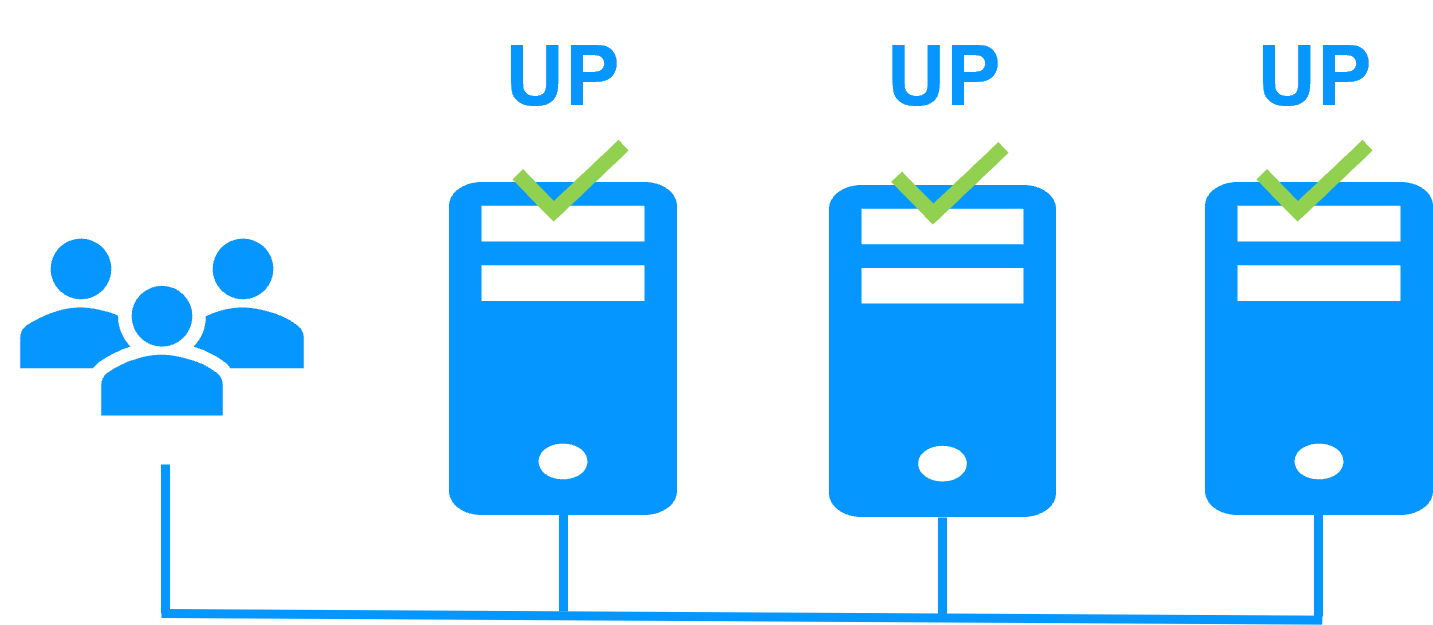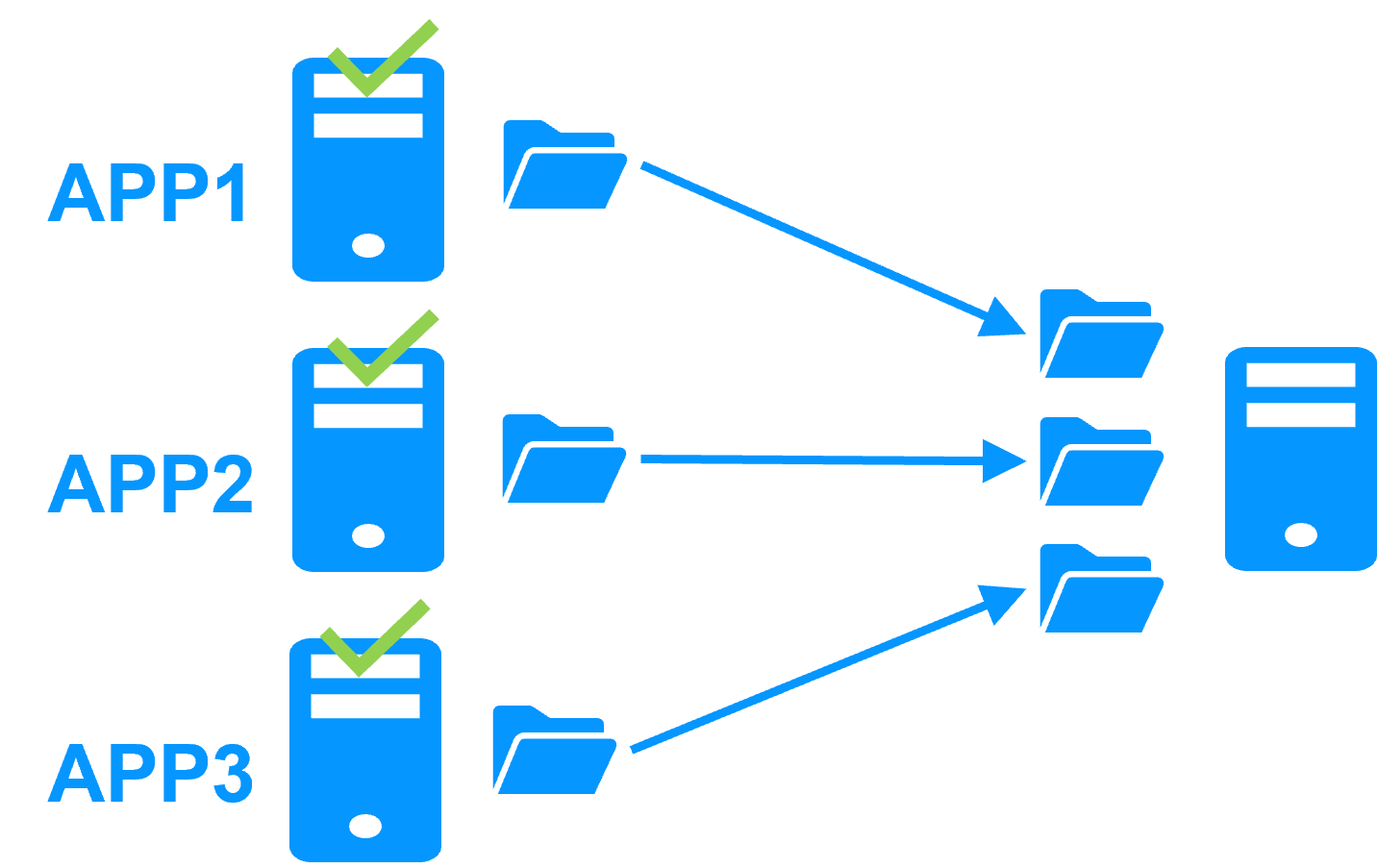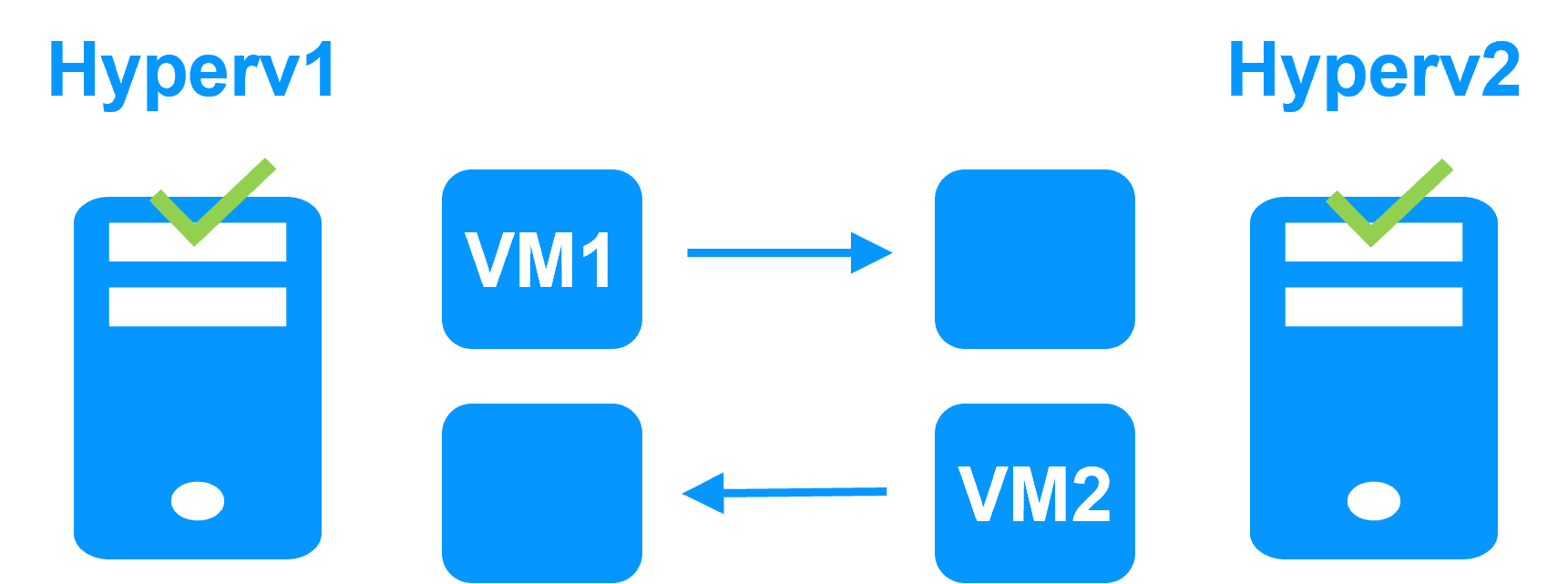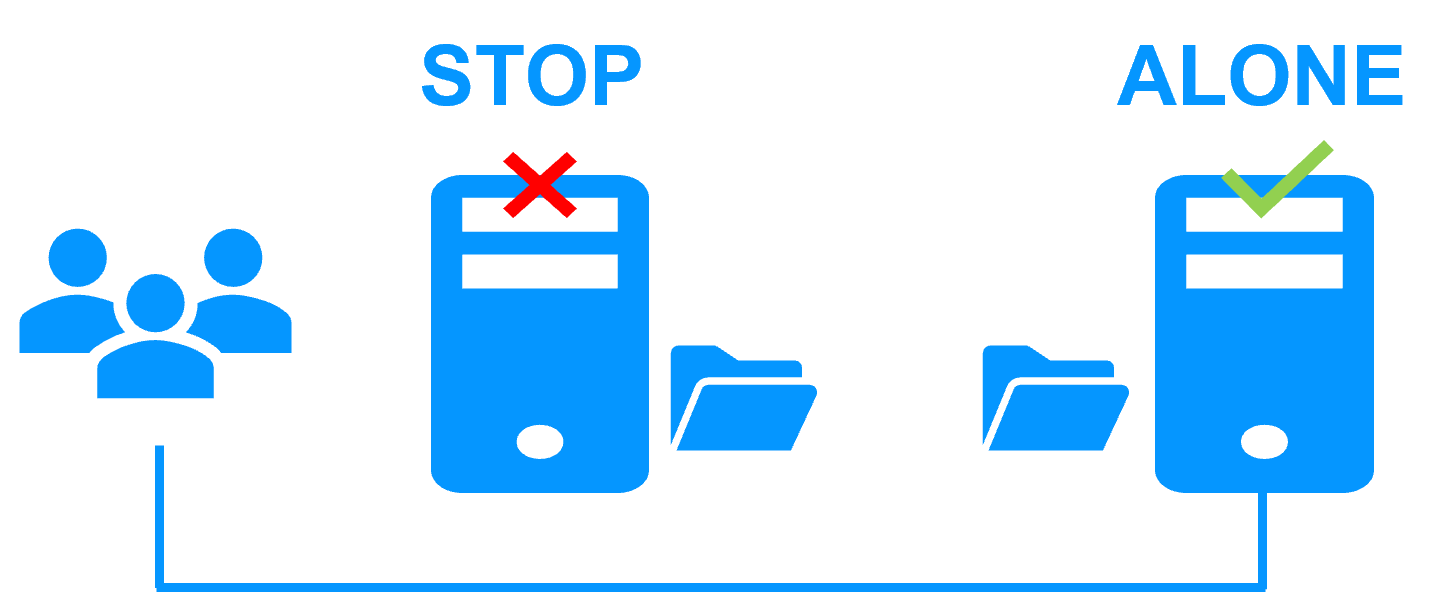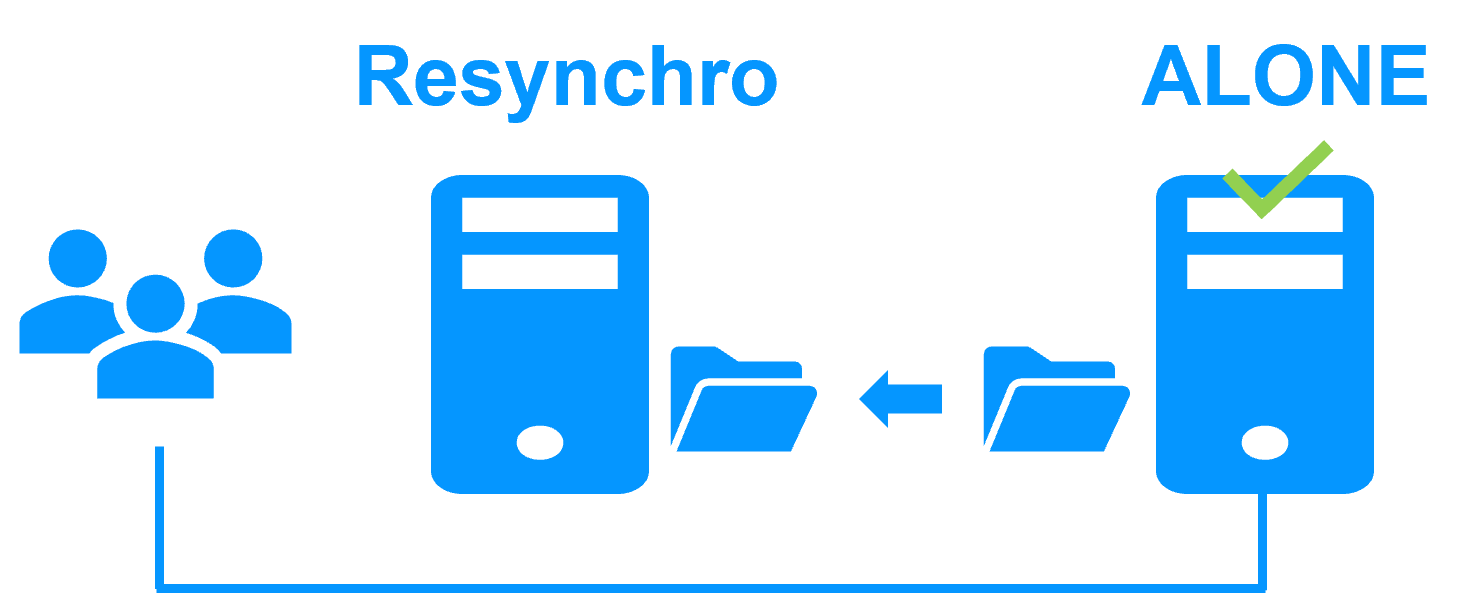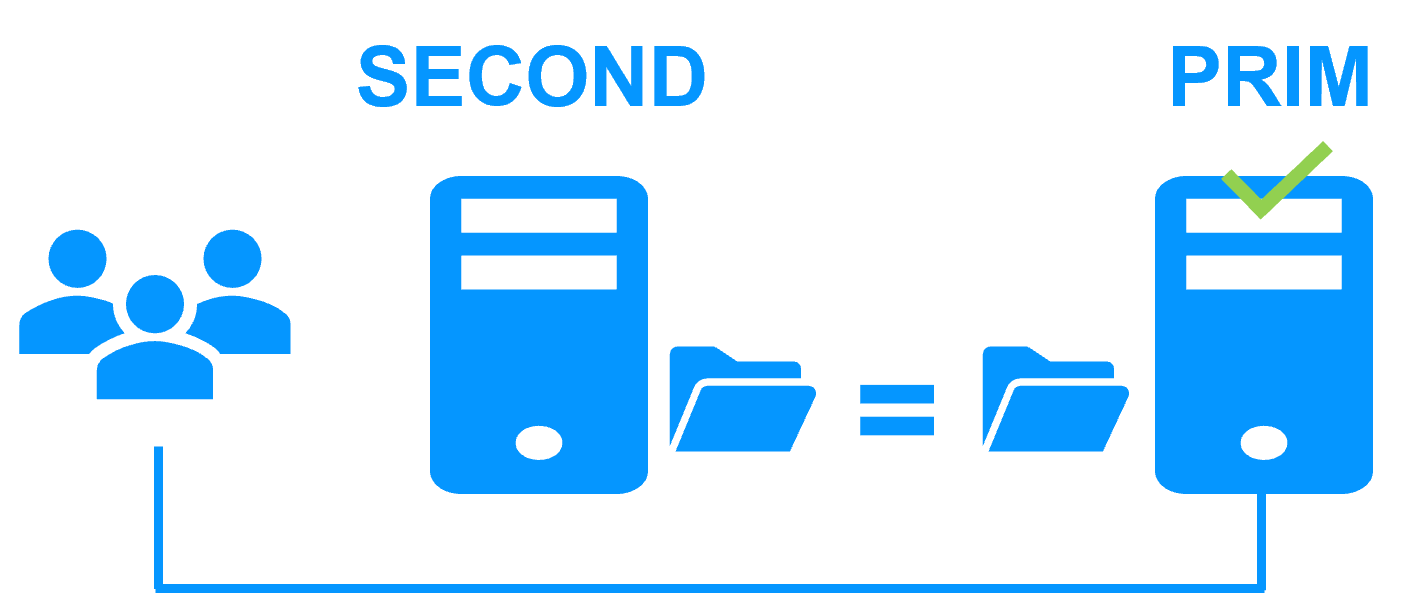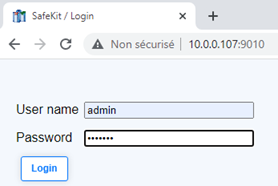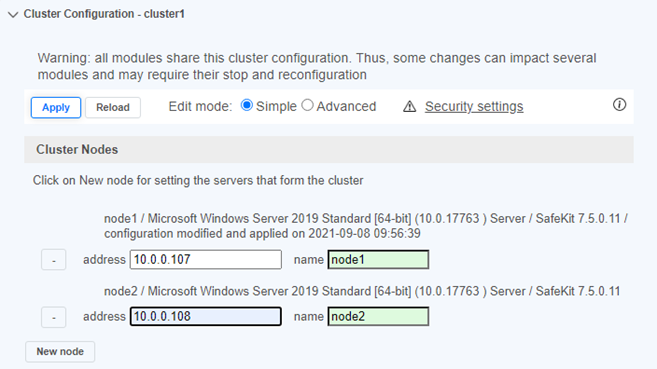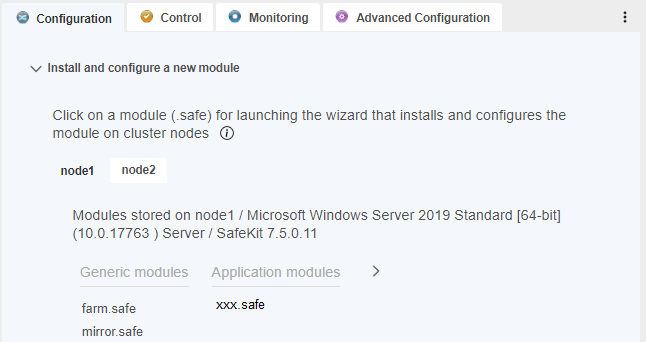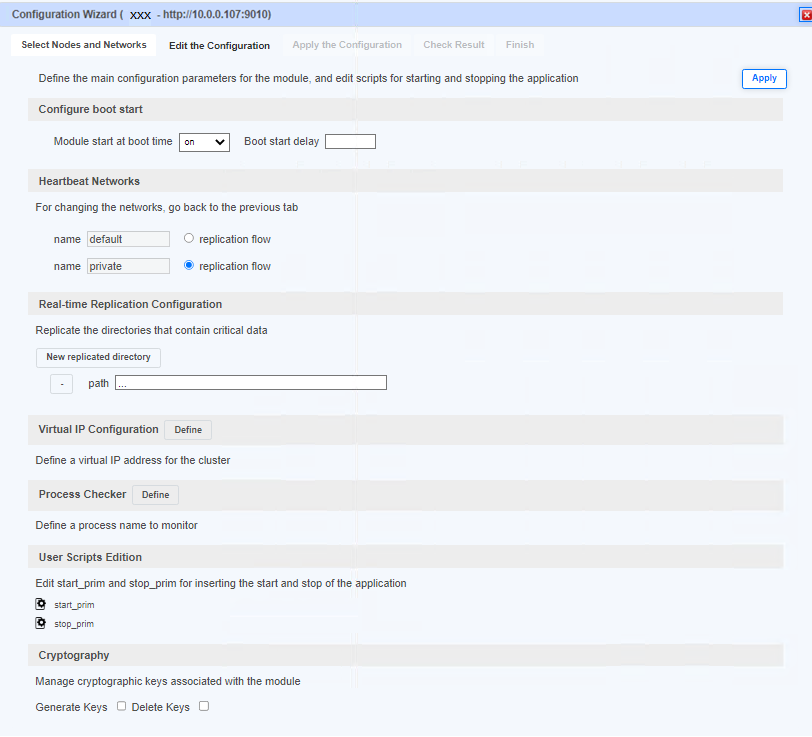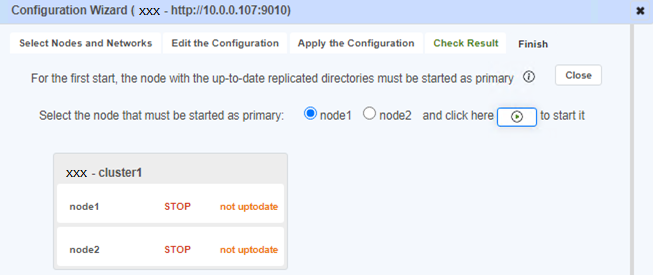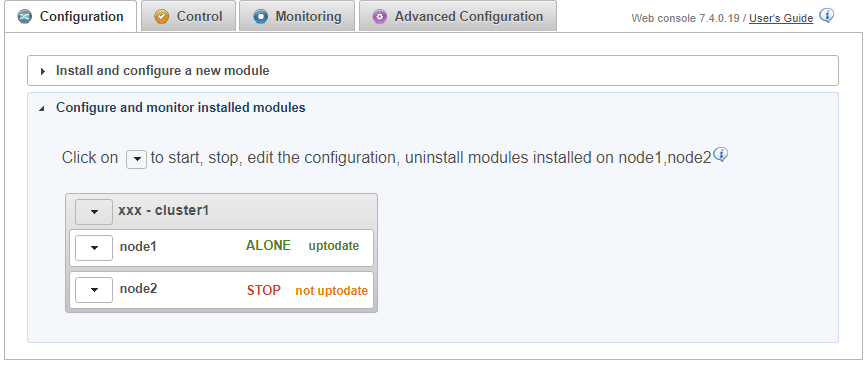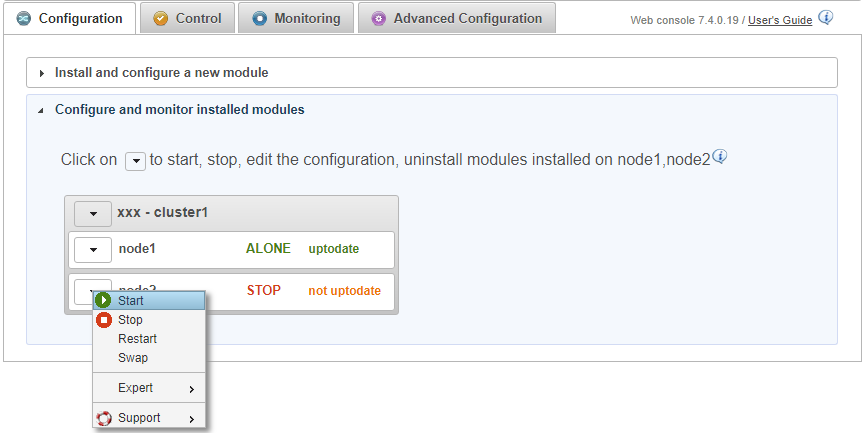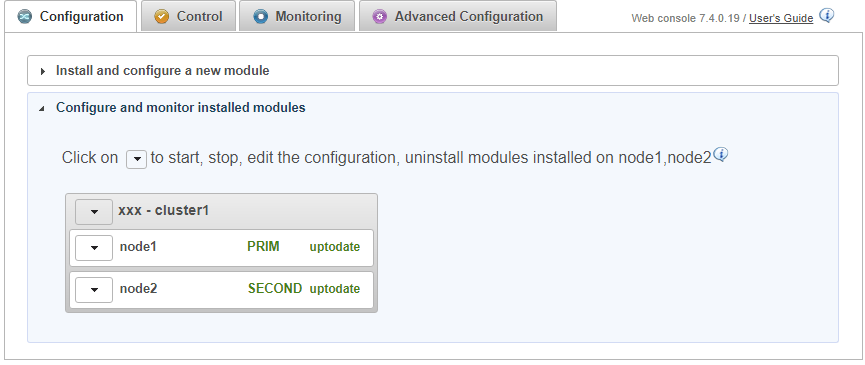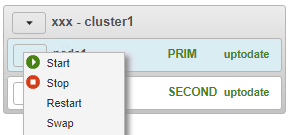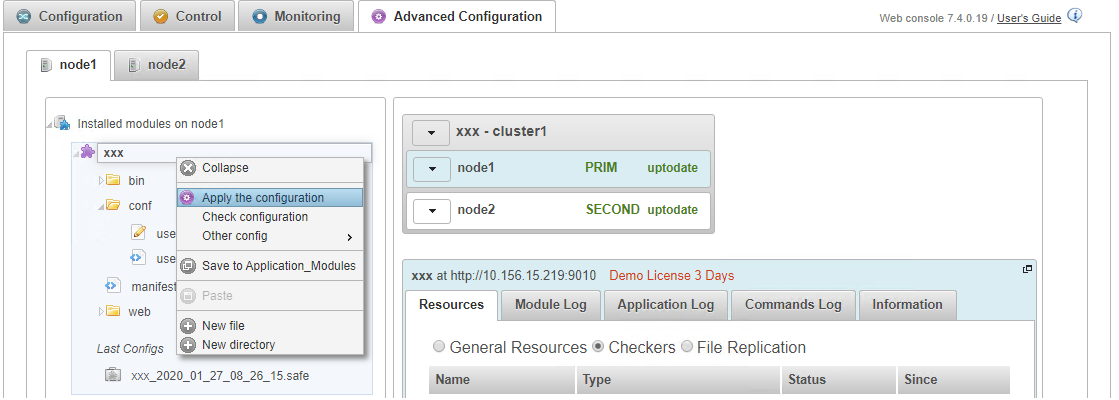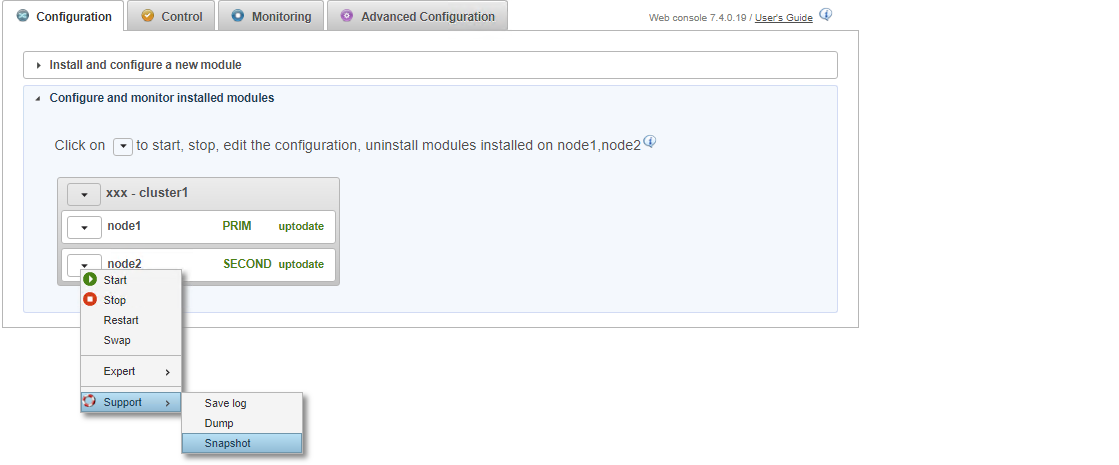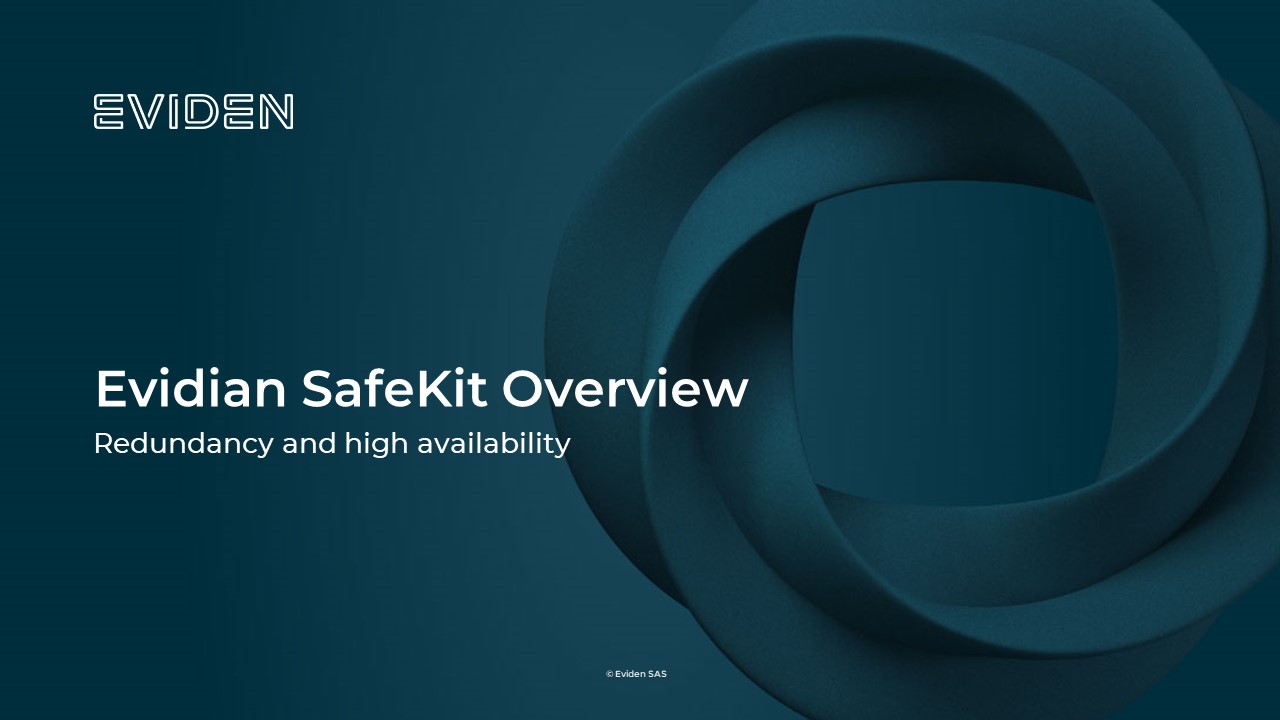Alternative to Always On SQL Server for express and standard editions
Evidian SafeKit without failover cluster, without domain controller and active directory, without 3 nodes for quorum
The solution for Microsoft SQL Server
Evidian SafeKit brings high availability to Microsoft SQL Server between two redundant nodes with synchronous real-time replication of data and automatic failover.
The solution is independent of the Microsoft SQL Server edition and works with express and standard editions.
A generic product
SafeKit is a generic product. You can replicate more than SQL server data and logs. If your application is SQL Server-based with specific folders containing your configuration or other files, you can replicate them in the same way. And you can restart your own services in addition to SQL server services.
>> SafeKit installation guide with Microsoft SQL Server express and standard editions
Without Microsoft failover cluster
SafeKit works without Microsoft failover cluster as with Always On SQL Server. It is an all-in-one offer that brings virtual IP address, synchronous real-time replication of folders, automatic failover and failback, and more... SafeKit eliminates the need for shared disks and database enterprise editions.
Without domain controller and active directory
SafeKit works without configuring domain controller and active directory as with Always On SQL Server. This easy-to-deploy, cost-effective solution does not require any specific skills.
Without 3 nodes for quorum
SafeKit works without the need for 3 nodes for quorum as with Always On SQL Server. In case of network isolation, SafeKit implements a split brain checker with a ping to a router playing the role of witness. Moreover, multiple heartbeats can be easily configured in the product.
Other redundancy and high availability solutions
With SafeKit, you can implement on Windows and Linux, real-time replication and failover of any folders and services, databases, complete Hyper-V or KVM virtual machines, Docker, Kubernetes, Cloud applications.
A complete solution
SafeKit solves:
- hardware failures (20% of problems), including the complete failure of a computer room,
- software failures (40% of problems), including restart of critical processes,
- and human errors (40% of problems) thanks to its ease of use and its web console.
Partners, the success with SafeKit
This platform agnostic solution is ideal for a partner reselling a critical application and who wants to provide a redundancy and high availability option easy to deploy to many customers.
With many references in many countries won by partners, SafeKit has proven to be the easiest solution to implement for redundancy and high availability of building management, video management, access control, SCADA software...
Step 1. Real-time replication
Server 1 (PRIM) runs the Microsoft SQL Server application. Clients are connected to a virtual IP address. SafeKit replicates in real time modifications made inside files through the network.
The replication is synchronous with no data loss on failure contrary to asynchronous replication.
You just have to configure the names of directories to replicate in SafeKit. There are no pre-requisites on disk organization. Directories may be located in the system disk.
Step 2. Automatic failover
When Server 1 fails, Server 2 takes over. SafeKit switches the virtual IP address and restarts the Microsoft SQL Server application automatically on Server 2.
The application finds the files replicated by SafeKit uptodate on Server 2. The application continues to run on Server 2 by locally modifying its files that are no longer replicated to Server 1.
The failover time is equal to the fault-detection time (30 seconds by default) plus the application start-up time.
Step 3. Automatic failback
Failback involves restarting Server 1 after fixing the problem that caused it to fail.
SafeKit automatically resynchronizes the files, updating only the files modified on Server 2 while Server 1 was halted.
Failback takes place without disturbing the Microsoft SQL Server application, which can continue running on Server 2.
Step 4. Back to normal
After reintegration, the files are once again in mirror mode, as in step 1. The system is back in high-availability mode, with the Microsoft SQL Server application running on Server 2 and SafeKit replicating file updates to Server 1.
If the administrator wishes the application to run on Server 1, he/she can execute a "swap" command either manually at an appropriate time, or automatically through configuration.
More information on power outage and network isolation in a cluster.
Redundancy at the application level
In this type of solution, only application data are replicated. And only the application is restared in case of failure.
With this solution, restart scripts must be written to restart the application.
We deliver application modules to implement redundancy at the application level (like the Microsoft SQL Server module provided in the free trial below). They are preconfigured for well known applications and databases. You can customize them with your own services, data to replicate, application checkers. And you can combine application modules to build advanced multi-level architectures.
This solution is platform agnostic and works with applications inside physical machines, virtual machines, in the Cloud. Any hypervisor is supported (VMware, Hyper-V...).
Redundancy at the virtual machine level
In this type of solution, the full Virtual Machine (VM) is replicated (Application + OS). And the full VM is restarted in case of failure.
The advantage is that there is no restart scripts to write per application and no virtual IP address to define. If you do not know how the application works, this is the best solution.
This solution works with Windows/Hyper-V and Linux/KVM but not with VMware. This is an active/active solution with several virtual machines replicated and restarted between two nodes.
- Solution for a new application (no restart script to write): Windows/Hyper-V, Linux/KVM
More comparison between VM HA vs Application HA
Why a replication of a few Tera-bytes?
Resynchronization time after a failure (step 3)
- 1 Gb/s network ≈ 3 Hours for 1 Tera-bytes.
- 10 Gb/s network ≈ 1 Hour for 1 Tera-bytes or less depending on disk write performances.
Alternative
- For a large volume of data, use external shared storage.
- More expensive, more complex.
Why a replication < 1,000,000 files?
- Resynchronization time performance after a failure (step 3).
- Time to check each file between both nodes.
Alternative
- Put the many files to replicate in a virtual hard disk / virtual machine.
- Only the files representing the virtual hard disk / virtual machine will be replicated and resynchronized in this case.
Why a failover ≤ 32 replicated VMs?
- Each VM runs in an independent mirror module.
- Maximum of 32 mirror modules running on the same cluster.
Alternative
- Use an external shared storage and another VM clustering solution.
- More expensive, more complex.
Why a LAN/VLAN network between remote sites?
- Automatic failover of the virtual IP address with 2 nodes in the same subnet.
- Good bandwidth for resynchronization (step 3) and good latency for synchronous replication (typically a round-trip of less than 2ms).
Alternative
- Use a load balancer for the virtual IP address if the 2 nodes are in 2 subnets (supported by SafeKit, especially in the cloud).
- Use backup solutions with asynchronous replication for high latency network.
Prerequisites
- You need Microsoft SQL Server installed on 2 nodes (virtual machines or physical servers).
- On Windows, with Windows services manager, put SQL services with Boot Startup Type = Manual on both nodes.
SafeKit controls start of SQL services in the restart scripts. Edit the restart scripts during the configuration to check if you have put all services in Manual boot including the new ones that you can add.
Package installation on Windows
-
Download the free version of SafeKit on 2 Windows nodes.
Note: the free version includes all SafeKit features. At the end of the trial, you can activate permanent license keys without uninstalling the package.
-
To open the Windows firewall, on both nodes start a powershell as administrator, and type
c:/safekit/private/bin/firewallcfg add -
To initialize the password for the default admin user of the web console, on both nodes start a powershell as administrator, and type
c:/safekit/private/bin/webservercfg.ps1 -passwd pwd- Use aphanumeric characters for the password (no special characters).
- pwd must be the same on both nodes.
-
Exclude from antivirus scans C:\safekit\ (the default installation directory) and all replicated folders that you are going to define.
Antiviruses may face detection challenges with SafeKit due to its close integration with the OS, virtual IP mechanisms, real-time replication and restart of critical services.
Module installation on Windows
-
Download the sqlserver.safe module.
The module is free. It contains the files userconfig.xml and the restart scripts.
- Put sqlserver.safe under C:\safekit\Application_Modules\demo\ (create the demo directory if it does not exist).
1. Launch the SafeKit console
- Launch the web console in a browser on one cluster node by connecting to
http://localhost:9010. - Enter
adminas user name and the password defined during installation.
You can also run the console in a browser on a workstation external to the cluster.
The configuration of SafeKit is done on both nodes from a single browser.
To secure the web console, see 11. Securing the SafeKit web console in the User's Guide.
2. Configure node addresses
- Enter the node IP addresses.
- Then, click on
Applyto save the configuration.
If node1 or node2 background color is red, check connectivity of the browser to both nodes and check firewall on both nodes for troubleshooting.
This operation will place the IP addresses in the cluster.xml file on both nodes (more information in the training with the command line).
4. Configure the module
- Choose an automatic start of the module at boot without delay.
- Normally, you have a single heartbeat network on which the replication is made. But, you can define a private network if necessary.
- Check that the replicated directories are installed on both nodes and contain the application data.
Replication of data and also logs is required for a database.
You can add new replicated directories as needed. - Enter a virtual IP address. A virtual IP address is a standard IP address in the same IP network (same subnet) as the IP addresses of both nodes.
Application clients must be configured with the virtual IP address (or the DNS name associated with the virtual IP address).
The virtual IP address is automatically switched in the event of a failure. start_primandstop_primmust contain starting and stopping of the Microsoft SQL Server application.
You can add new services in these scripts.
Check that the names of the services in these scripts are those installed on both nodes, otherwise modify them in the scripts.- Stop the services configured in
start_primon both nodes. - On Windows and on both nodes, with the Windows services manager, set
Boot Startup Type = Manualfor all the services registered instart_prim(SafeKit controls the start of services instart_prim).
Note that if a process name is displayed in Process Checker, it will be monitored with a restart action in case of failure. Configuring a wrong process name will cause the module to stop right after its start.
This operation will report the configuration in the userconfig.xml, start_prim, stop_prim files on both nodes (more information in the training with the command line).
5. Verify successful configuration
- Check the success message (green) on both nodes and click Next.
On Linux, you may get an error at this step if the replicated directories are mount points. See this article to solve the problem.
6. Start the node with up-to-date data
- If node 1 has the up-to-date replicated directories, select it and start it.
When node 2 will be started, all data will be copied from node 1 to node 2.
If you make the wrong choice, you run the risk of synchronizing outdated data on both nodes.
It is also assumed that the Microsoft SQL Server application is stopped on node 1 so that SafeKit installs the replication mechanisms and then starts the application in the start_prim script.
7. Wait for the transition to ALONE (green)
- Node 1 should reach the ALONE (green) state, which means that the
start_primscript has been executed on node 1.
If the status is ALONE (green) and the application is not started, check output messages of start_prim in the Application Log of node 1.
If node 1 does not reach ALONE (green) state, analyze why with the Module Log of node 1.
If the cluster is in WAIT (red) not uptodate, STOP (red) not uptodate state, stop the WAIT node and force its start as primary.
8. Start node 2
- Start node 2 with its contextual menu.
- Wait for the SECOND (green) state.
Node 2 stays in the SECOND (magenta) state while resynchronizing the replicated directories (copy from node 1 to node 2).
This may take a while depending on the size of files to resynchronize in replicated directories and the network bandwidth.
To see the progress of the copy, see the Module Log of node 2 with the verbose option without forgetting to refresh the window.
9. Verify that the cluster is operational
- Check that the cluster is green/green with Microsoft SQL Server services running on the PRIM node and not running on the SECOND node.
Only changes inside files are replicated in real time in this state.
Components that are clients of Microsoft SQL Server services must be configured with the virtual IP address. The configuration can be done with a DNS name (if a DNS name has been created and associated with the virtual IP address).
10. Testing
- Stop the PRIM node by scrolling down its contextual menu and clicking Stop. Do not use swap for a first test (see why below).
- Verify that there is a failover on the SECOND node which should become ALONE (green).
- And with Microsoft Management Console (MMC) on Windows or with command lines on Linux, check the failover of Microsoft SQL Server services (stopped on node 1 in the
stop_primscript and started on node 2 in thestart_primscript).
If everything is okay, initiate a start on node1, which will resynchronize the replicated directories from node2.
If things go wrong, stop node2 and force the start as primary of node1, which will restart with its locally healthy data at the time of the stop.
The swap involves a stop-start of the PRIM, which will resynchronize the data from node2 immediately after its stop, leaving no chance for a restart on healthy data if there is a replication configuration issue.
If the Microsoft SQL Server application is not started on node 2 while the state is ALONE (green), check output messages of the start_prim script in the Application Log of node 2.
If ALONE (green) is not reached, analyze why with the Module Log of node 2.
Module log
- Read the module log to understand the reasons of a failover, of a waiting state etc...
To see the module log of node 1 (image):
- click on the Control tab
- click on node 1/PRIM on the left side to select the server (it becomes blue)
- click on Module Log
- click on the Refresh icon (green arrows) to update the console
- click on the floppy disk to save the module log in a .txt file and to analyze in a text editor
Click on node2 to see the module log of the secondary server.
Application log
- Read the application log to see the output messages of the start_prim and stop_prim restart scripts.
To see the application log of node1 (image):
- click on the Control tab
- click on node 1/PRIM on the left side to select the server (it becomes blue)
- click on Application Log to see messages when starting and stopping Microsoft SQL Server services
- click on the Refresh icon (green arrows) to update the console
- click on the floppy disk to save the application log in a .txt file and to analyze in a text editor
Click on node 2 to see the application log of the secondary server.
Advanced configuration
- In Advanced Configuration tab, you can edit internal files of the module: bin/start_prim and bin/stop_prim and conf/userconfig.xml .
If you make change in the internal files here, you must apply the new configuration by a right click on the icon/xxx on the left side (see image): the interface will allow you to redeploy the modified files on both servers.
Support
- For getting support, take 2 SafeKit Snapshots (2 .zip files), one for each server.
If you have an account on https://support.evidian.com, upload them in the call desk tool.
Internals of a SafeKit / Microsoft SQL Server high availability cluster with synchronous replication and failover
Go to the Advanced Configuration tab in the console, for editing these filesInternal files of the Windows sqlserver.safe module
userconfig.xml (description in the User's Guide)
<!DOCTYPE safe>
<safe>
<service mode="mirror" defaultprim="alone" maxloop="3" loop_interval="24" failover="on">
<!-- Heartbeat Configuration -->
<!-- Names or IP addresses on the default network are set during initialization in the console -->
<heart pulse="700" timeout="30000">
<heartbeat name="default" ident="flow">
</heartbeat>
</heart>
<!-- Virtual IP Configuration -->
<!-- Replace
* VIRTUAL_TO_BE_DEFINED by the name of your virtual server
-->
<vip>
<interface_list>
<interface check="on" arpreroute="on">
<real_interface>
<virtual_addr addr="VIRTUAL_TO_BE_DEFINED" where="one_side_alias" />
</real_interface>
</interface>
</interface_list>
</vip>
<!-- Software Error Detection Configuration -->
<errd polltimer="10">
<!-- Microsoft SQL Server process -->
<proc name="sqlservr.exe" atleast="1" action="restart" class="prim" />
<proc name="sqlagent.exe" atleast="1" action="restart" class="prim" />
<proc name="sqlwriter.exe" atleast="1" action="restart" class="prim" />
</errd>
<!-- File Replication Configuration -->
<!-- Replace
* YOUR_INSTANCE to set the directory of your Microsoft SQL Server database and logs
-->
<rfs async="second" acl="off" nbrei="3">
<replicated dir="C:\Program Files\Microsoft SQL Server\YOUR_INSTANCE\MSSQL\DATA" mode="read_only" />
<replicated dir="C:\Program Files\Microsoft SQL Server\YOUR_INSTANCE\MSSQL\Log" mode="read_only" />
</rfs>
<!-- User scripts activation -->
<user nicestoptimeout="300" forcestoptimeout="300" logging="userlog" />
</service>
</safe>
start_prim.cmd
@echo off
rem Script called on the primary server for starting application services
rem For logging into SafeKit log use:
rem "%SAFE%\safekit" printi | printe "message"
rem stdout goes into Application log
echo "Running start_prim %*"
set res=0
net start "MSSQLServer" > nul
if not %errorlevel% == 0 (
%SAFE%\safekit printi "MSSQLServer start failed"
) else (
%SAFE%\safekit printi "MSSQLServer started"
)
net start "SQLServerAgent" > nul
if not %errorlevel% == 0 (
%SAFE%\safekit printi "SQLServerAgent start failed"
) else (
%SAFE%\safekit printi "SQLServerAgent started"
)
net start "SQLWriter" > nul
if not %errorlevel% == 0 (
%SAFE%\safekit printi "SQLWriter start failed"
) else (
%SAFE%\safekit printi "SQLWriter started"
)
if %res% == 0 goto end
:stop
set res=%errorlevel%
"%SAFE%\safekit" printe "start_prim failed"
rem uncomment to stop SafeKit when critical
rem "%SAFE%\safekit" stop -i "start_prim"
:end
stop_prim.cmd
@echo off
rem Script called on the primary server for stopping application services
rem ----------------------------------------------------------
rem
rem 2 stop modes:
rem
rem - graceful stop
rem call standard application stop with net stop
rem
rem - force stop (%1=force)
rem kill application's processes
rem
rem ----------------------------------------------------------
rem For logging into SafeKit log use:
rem "%SAFE%\safekit" printi | printe "message"
rem stdout goes into Application log
echo "Running stop_prim %*"
set res=0
rem default: no action on forcestop
if "%1" == "force" goto check
rem %SAFE%\safekit printi "Stopping SQLWriter..."
rem net stop "SQLWriter" /Y > nul
rem %SAFE%\safekit printi "Stopping SQLServerAgent..."
rem net stop "SQLServerAgent" /Y > nul
%SAFE%\safekit printi "Stopping MSSQLServer..."
net stop "MSSQLServer" /Y > nul
rem wait a little for a real stop of services
%SAFEBIN%\sleep 10
goto end
:check
rem call :checksrv "SQLWRITER"
rem call :checksrv "SQLServerAgent"
call :checksrv "MSSQLServer"
goto end
:checksrv
set SERVICE=%1
net stop %SERVICE% /Y
if NOT ERRORLEVEL 1 goto end
sc query state= inactive | findstr %SERVICE%
if NOT ERRORLEVEL 1 goto end
"%SAFE%\safekit" stop -i "stop_prim : service not stopped"
exit
:end
New application (real-time replication and failover)
New application (network load balancing and failover)
Database (real-time replication and failover)
- Microsoft SQL Server mirror
- PostgreSQL mirror
- MySQL mirror
- Oracle mirror
- MariaDB mirror
- Firebird mirror
Web (network load balancing and failover)
Full VM or container real-time replication and failover
Amazon AWS
Google GCP
Microsoft Azure
Other clouds
Physical security (real-time replication and failover)
Siemens (real-time replication and failover)
| VM HA with the SafeKit Hyper-V or KVM module | Application HA with SafeKit application modules |
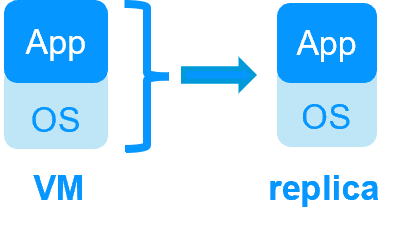 |
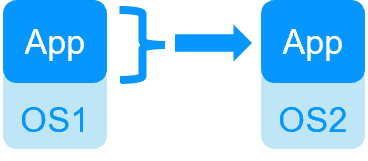 |
| SafeKit inside 2 hypervisors: replication and failover of full VM | SafeKit inside 2 virtual or physical machines: replication and failover at application level |
| Replicates more data (App+OS) | Replicates only application data |
| Reboot of VM on hypervisor 2 if hypervisor 1 crashes Recovery time depending on the OS reboot VM checker and failover (Virtual Machine is unresponsive, has crashed, or stopped working) |
Quick recovery time with restart of App on OS2 if crash of server 1 Around 1 mn or less (see RTO/RPO here) Application checker and software failover |
| Generic solution for any application / OS | Restart scripts to be written in application modules |
| Works with Windows/Hyper-V and Linux/KVM but not with VMware | Platform agnostic, works with physical or virtual machines, cloud infrastructure and any hypervisor including VMware |
| SafeKit with the Hyper-V module or the KVM module | Microsoft Hyper-V Cluster & VMware HA |
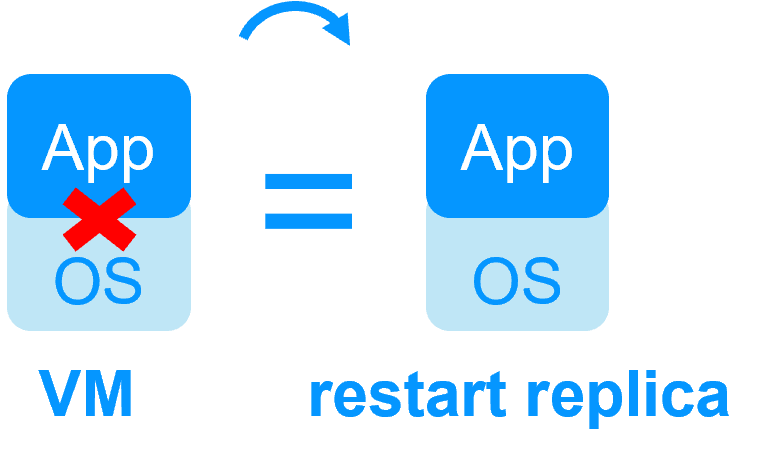 |
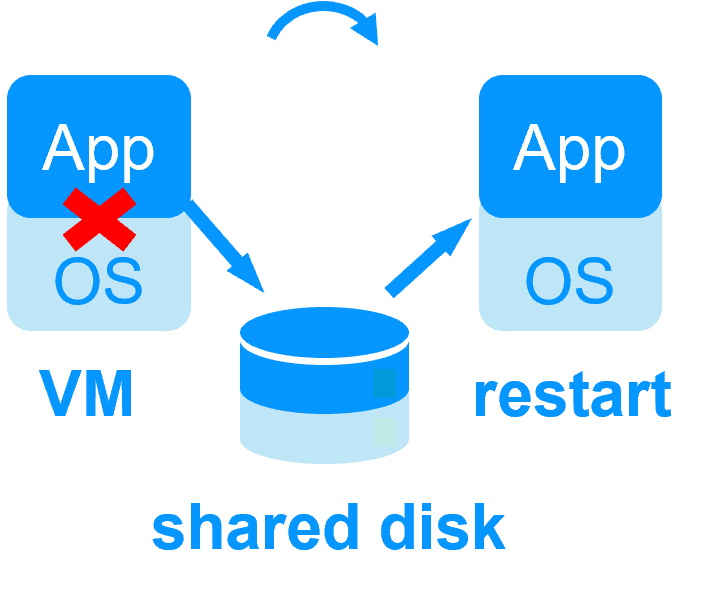 |
 No shared disk - synchronous real-time replication instead with no data loss No shared disk - synchronous real-time replication instead with no data loss |
 Shared disk and specific extenal bay of disk Shared disk and specific extenal bay of disk |
 Remote sites = no SAN for replication Remote sites = no SAN for replication |
 Remote sites = replicated bays of disk across a SAN Remote sites = replicated bays of disk across a SAN |
 No specific IT skill to configure the system (with hyperv.safe and kvm.safe) No specific IT skill to configure the system (with hyperv.safe and kvm.safe) |
 Specific IT skills to configure the system Specific IT skills to configure the system |
| Note that the Hyper-V/SafeKit and KVM/SafeKit solutions are limited to replication and failover of 32 VMs. | Note that the Hyper-V built-in replication does not qualify as a high availability solution. This is because the replication is asynchronous, which can result in data loss during failures, and it lacks automatic failover and failback capabilities. |
Evidian SafeKit mirror cluster with real-time file replication and failover |
|
3 products in 1
More info >
 |
|
Very simple configuration
More info >
 |
|
Synchronous replication
More info >
 |
|
Fully automated failback
More info >
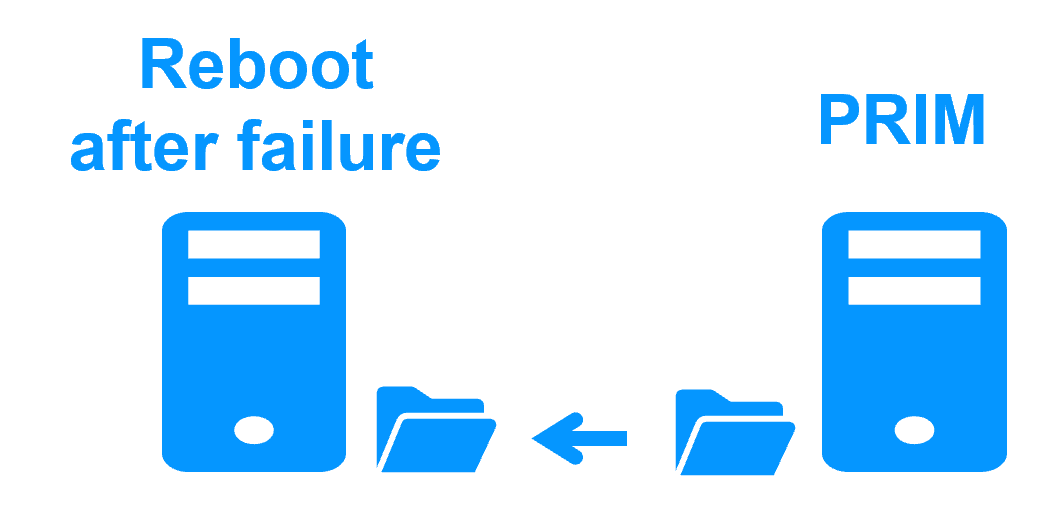 |
|
Replication of any type of data
More info >
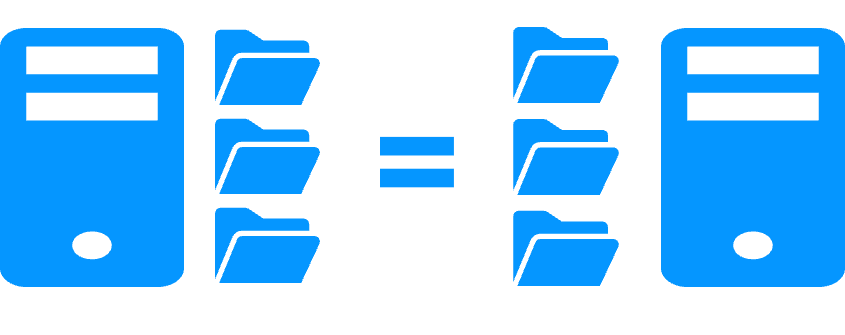 |
|
File replication vs disk replication
More info >
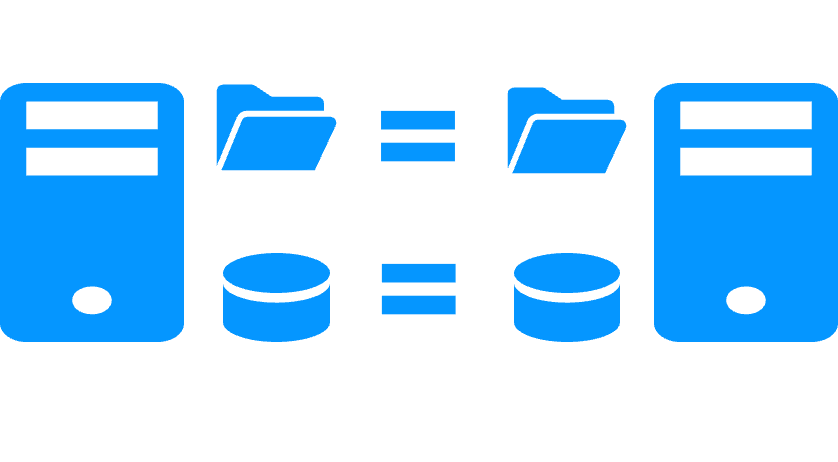 |
|
File replication vs shared disk
More info >
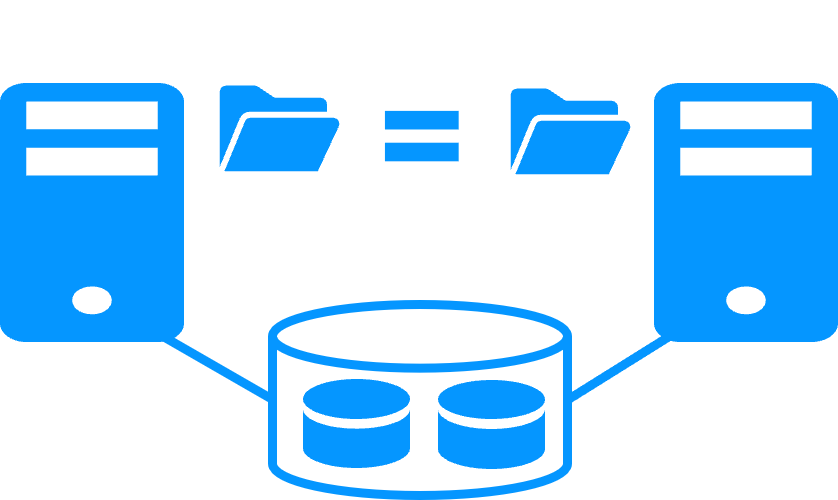 |
|
Remote sites and virtual IP address
More info >
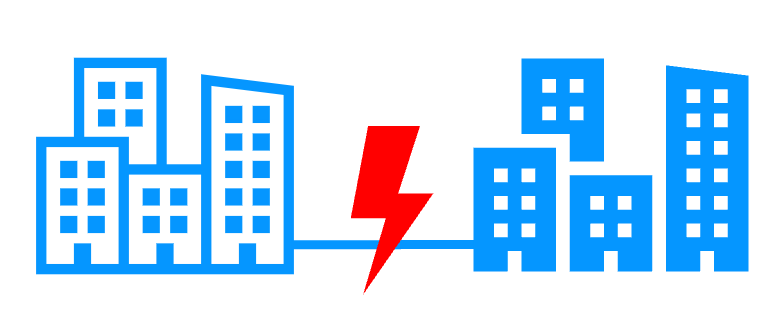 |
|
Quorum and split brain
More info >
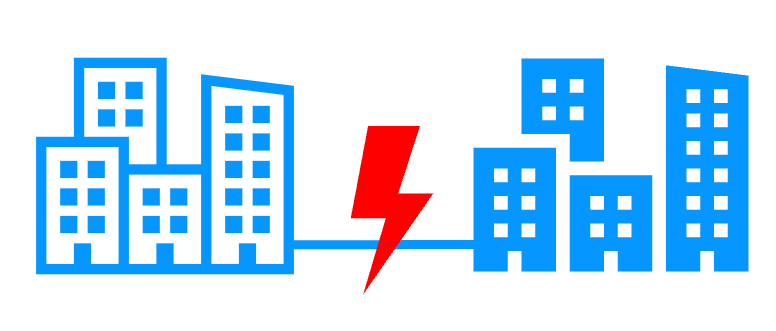 |
|
Active/active cluster
More info >
 |
|
Uniform high availability solution
More info >
 |
|
RTO / RPO
More info >
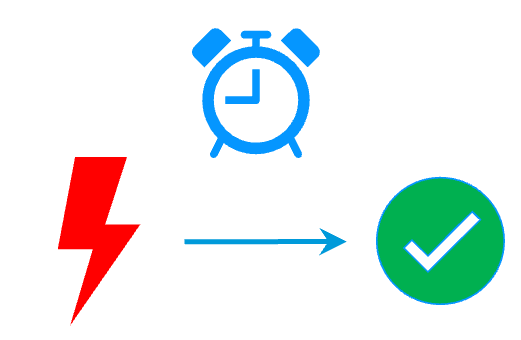 |
|
Evidian SafeKit farm cluster with load balancing and failover |
|
No load balancer or dedicated proxy servers or special multicast Ethernet address
More info >
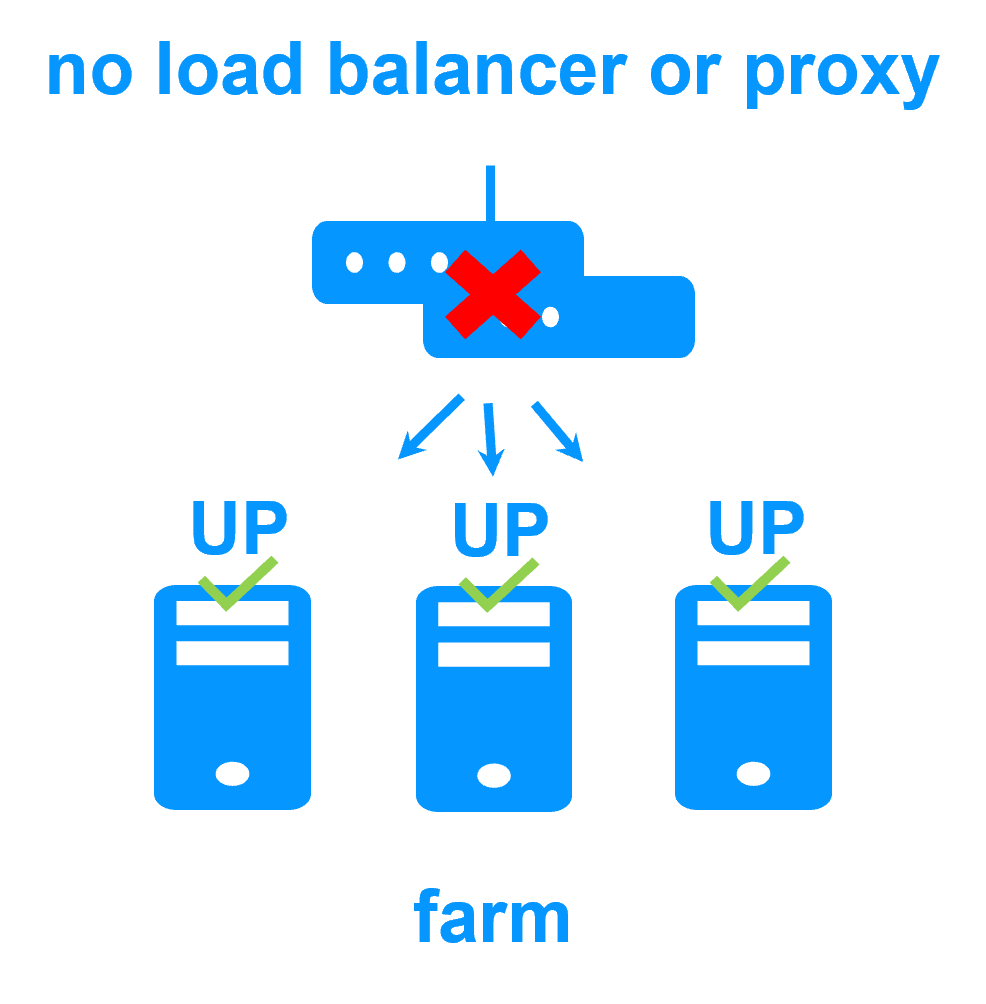 |
|
All clustering features
More info >
 |
|
Remote sites and virtual IP address
More info >
 |
|
Uniform high availability solution
More info >
 |
|
Software clustering vs hardware clustering More info > |
|
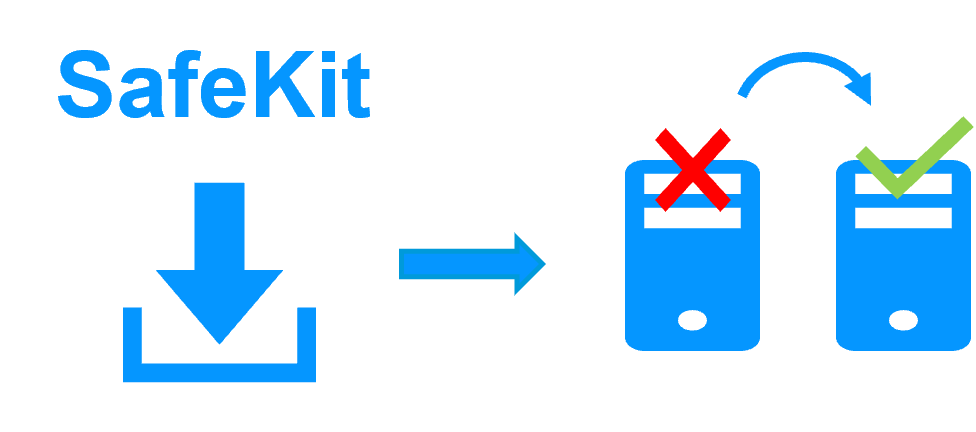
|
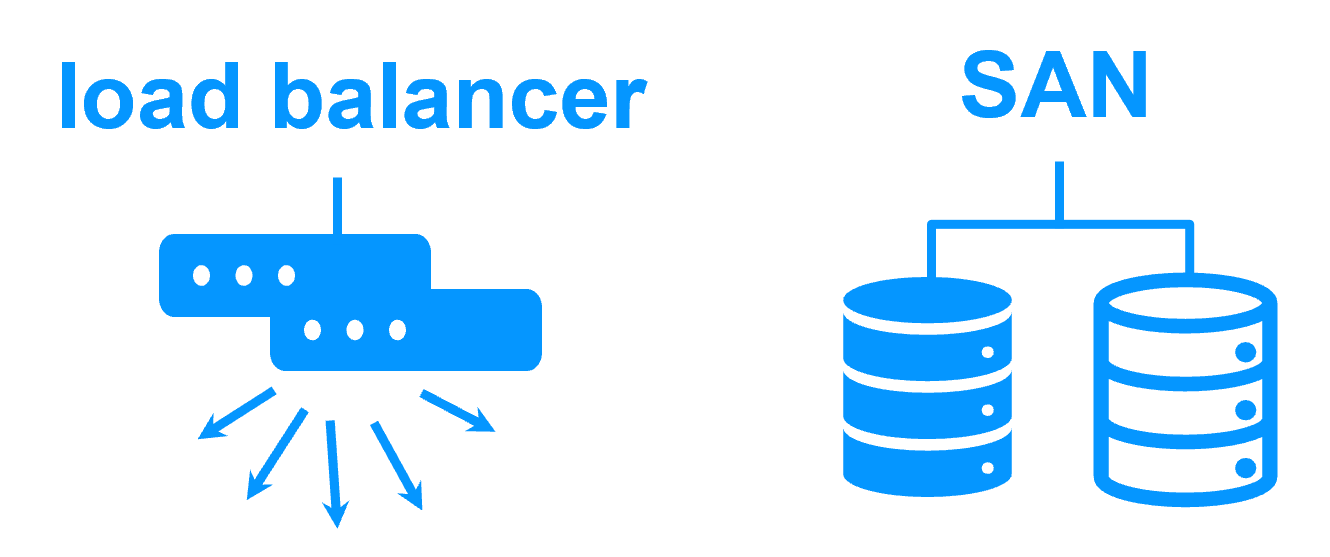
|
Shared nothing vs a shared disk cluster More info > |
|

|
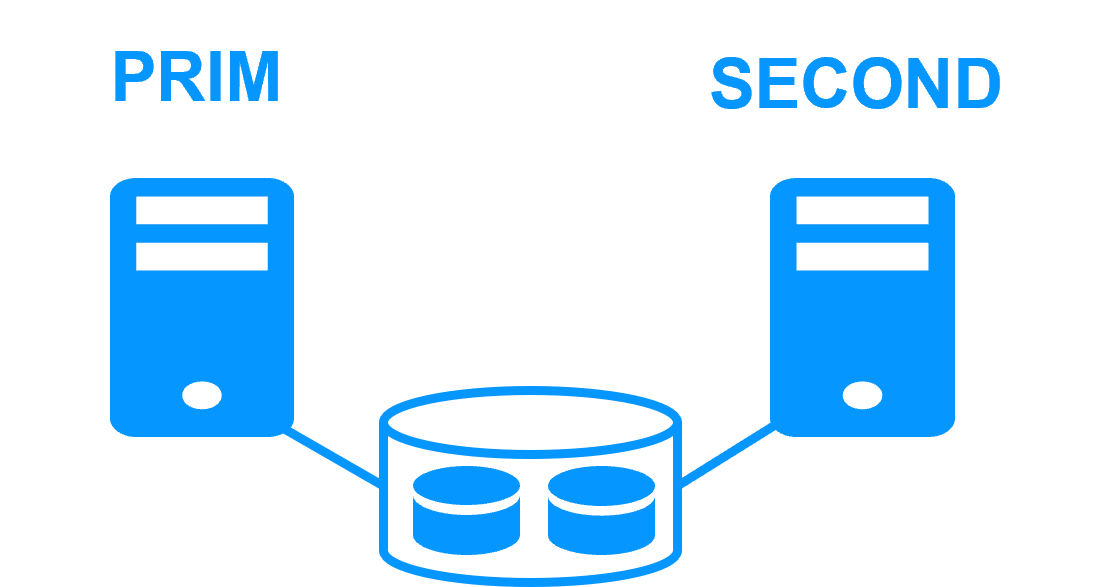
|
Application High Availability vs Full Virtual Machine High Availability More info > |
|

|

|
High availability vs fault tolerance More info > |
|

|
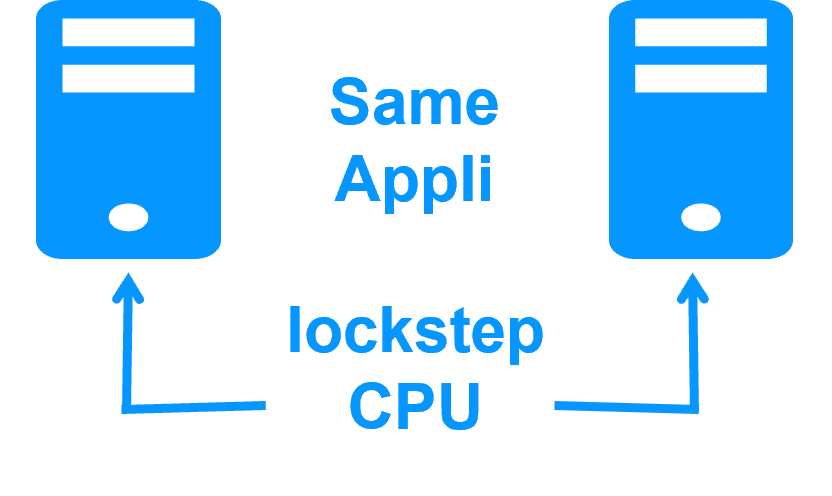
|
Synchronous replication vs asynchronous replication More info > |
|

|
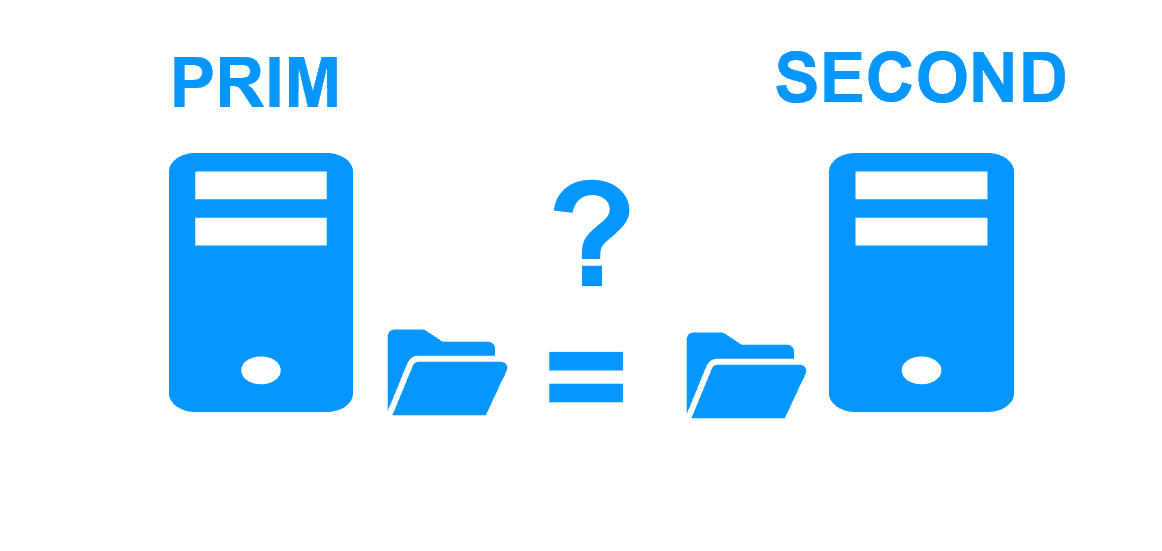
|
Byte-level file replication vs block-level disk replication More info > |
|

|
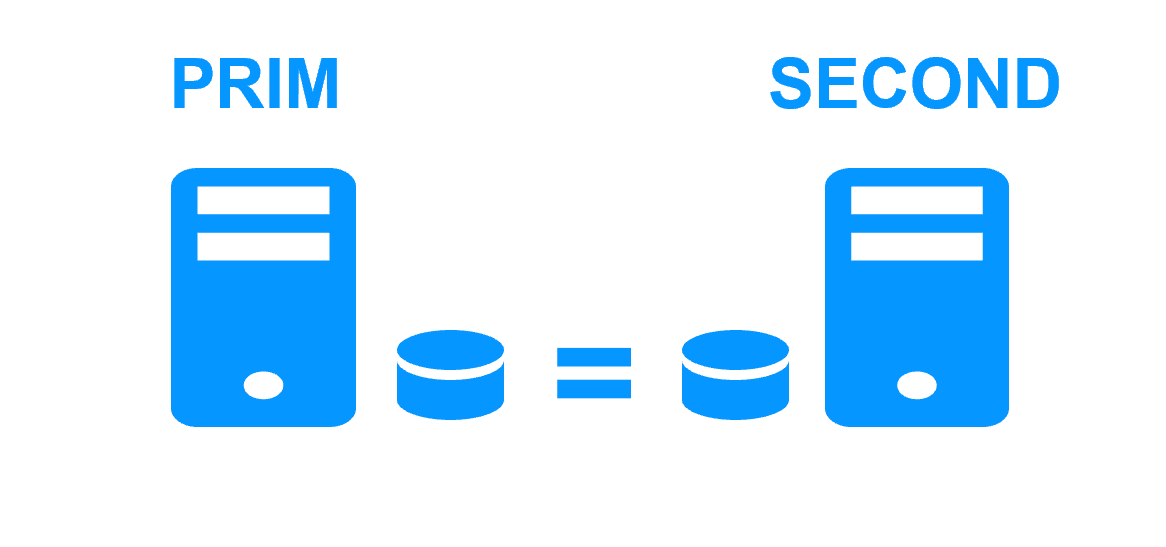
|
Heartbeat, failover and quorum to avoid 2 master nodes More info > |
|

|

|
Virtual IP address primary/secondary, network load balancing, failover More info > |
|
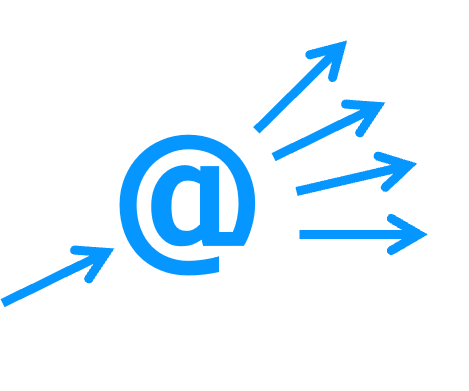
|

|
To kickstart your journey with SafeKit, begin with the quick installation guides.
Packages (8.2)
- Windows (with Microsoft Visual C++ Redistributable)
- Windows (without Microsoft Visual C++ Redistributable)
- Linux
- Supported OS and last fixes
- Previous 7.5

